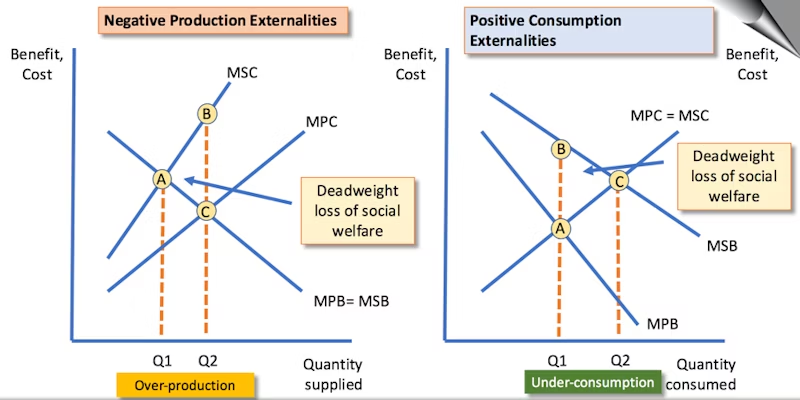Externalities
1/24
There's no tags or description
Looks like no tags are added yet.
Name | Mastery | Learn | Test | Matching | Spaced |
|---|
No study sessions yet.
25 Terms
Definition
They are spill over effects from production and or consumption for which no appropriate compensation is paid to one or more third parties affected.
3 reasons why externalities are inevitable
Interconnectedness of economic agents
Property rights and transaction costs
Public goods
Interconnectedness of economic agents - explanation
In a modern economy, individuals, firms and governments engage in a wide range of economic activities. These interactions often have ripple effects that extend beyond the immediate parties involved.
Property rights and transaction costs- explanation
Property rights are not always well defined, and transaction costs can be high making it difficult to negotiate and enforce agreements that internalise externalities,
Public goods - explanation
Public goods like clean air often cause positive externalities because they benefit everyone, whether they contribute to their provision or not. Individuals may underinvest in such goods assuming others will bear the costs.
Examples of production externalities
Positive - Reforestation projects and the free sharing of academic research
Negative - factory pollution and emissions
Consumption externalities - examples
Negative - household waste or noise and air pollution
Positive - vaccines to protect public health during a pandemic
Private vs external costs
Private - the internal costs faced by the producer ar consumer directly involved in a transaction eg, the private cost of owning and running a vehicle.
External - when the activity of one economic agent has a negative effect on the wellbeing of a third party. They impose costs on other agents.
Private vs external benefits
Private - the benefit, satisfaction, or utility that an individual agent such as a consumer or a business derives from producing or consuming something.
External - additional benefits that might occur from the production and or consumption
Social cost =
Private cost + external cost
Social benefit =
Private benefit + external benefit
Marginal private cost (MPC) - definition
The additional internal cost to a producer or consumer from supplying or consuming one extra unit of a good or service.
Marginal private benefit (MPB) - definition
The extra benefit, satisfaction or utility gained by producing/ consuming one extra unit of a good or service.
Negative consumption externality - diagram
Private optimum: where MPC=MPB
Social optimum: where MPC = MSB
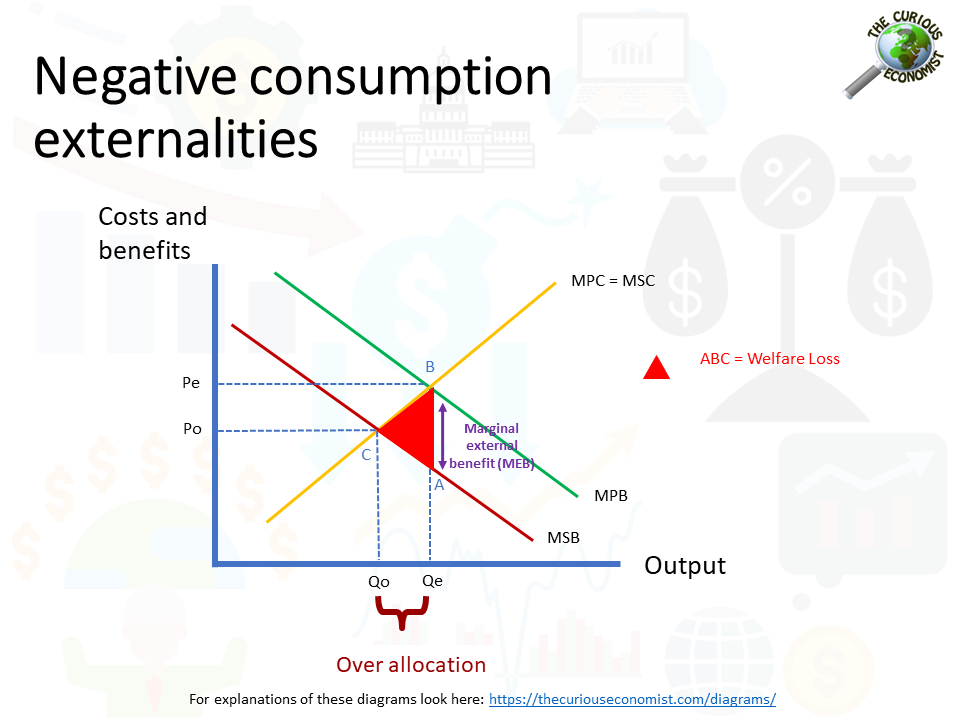
Explanation of negative consumption externalities
If consumption of a product reduces benefits enjoyed by third parties, the benefits to society are less than benefits obtained by individuals consuming the products.
Leads to overconsumption and overproduction.
Positive consumption externality - diagram
Private optimum: MSC = MPB
Social optimum: MSC = MSB
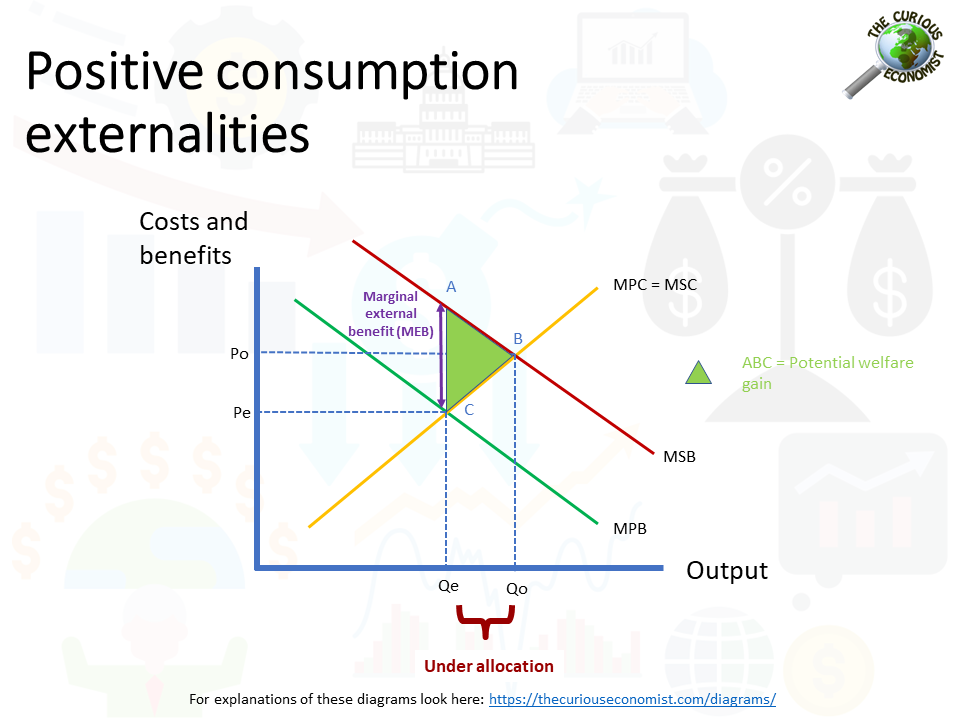
Positive consumption externality - explanation
When a third party benefits from the spill-over effects of consumption/ production. When there are positive externalities, there’s a potential welfare gain that is not achieved due to underconsumption as benefits are undervalued.
Negative production externality - diagram
Social optimum: MSC = MPB
Private optimum: MPC = MPB
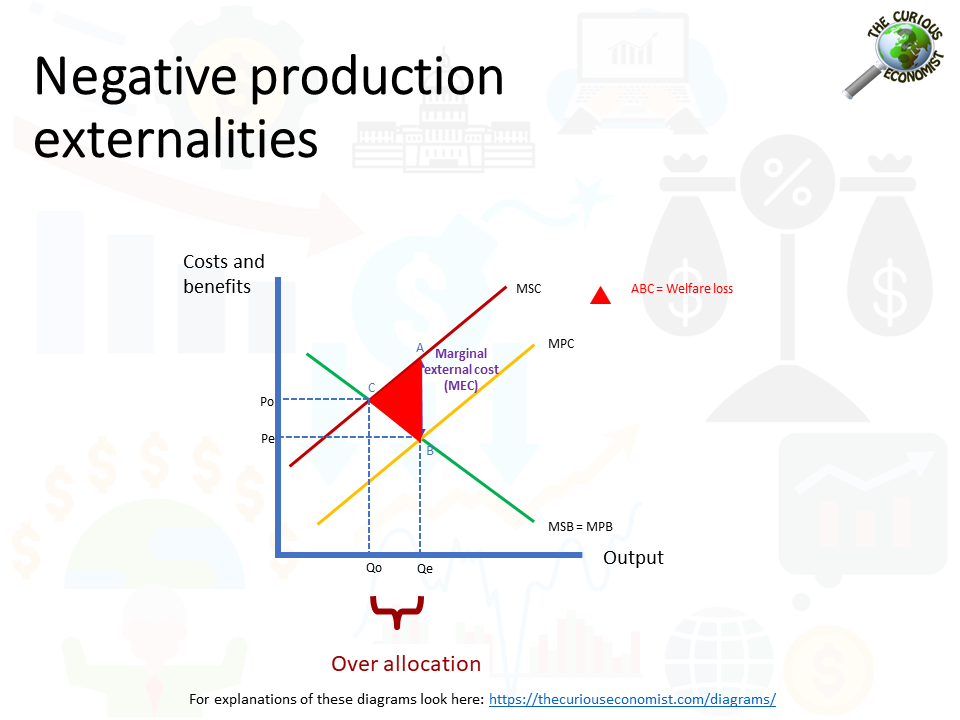
Negative production externality - explanation
There are spill-over effects of production that cost society more than the producer or individual has paid for. There is an overproduction as this isn’t accounted for.
Positive consumption externality - diagram
Private optimum: MPC = MPB
Social optimum: MSC = MPB
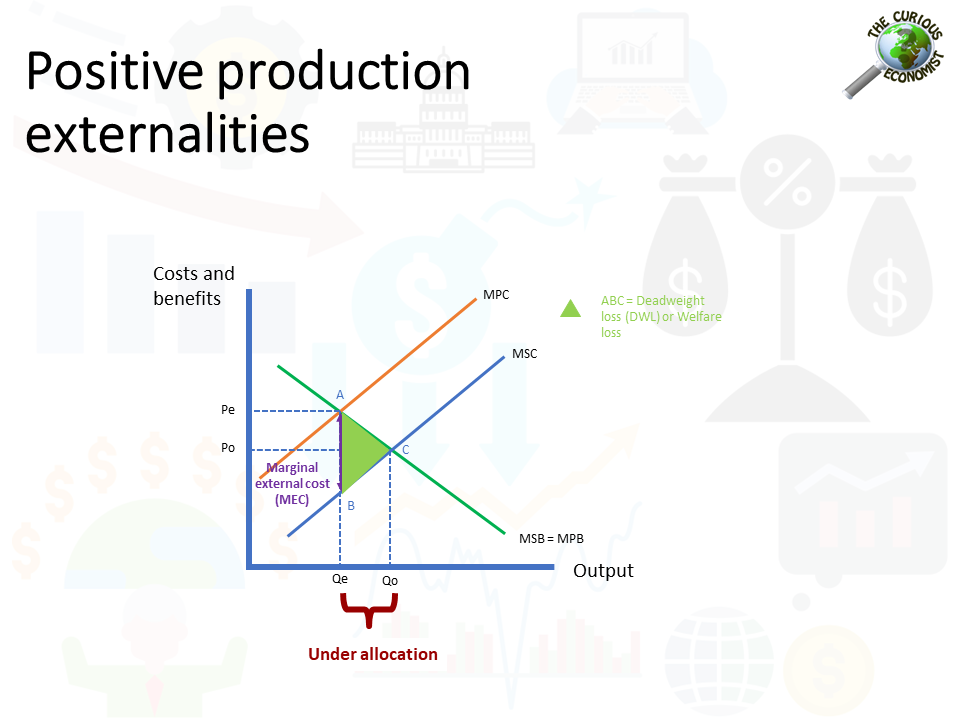
Positive consumption externality - explanation
When a third party benefits from the production of a good or service. This social cost is lower than the private cost paid by individuals or firms. There is underproduction.
Mixed externalities - definition
When production and/or consumption leads to both external costs and benefits.
The socially optimum level of output will depend on the extent and value of these externalities.
How must policymakers address mixed externalities?
Must find ways to encourage the positive aspects while mitigating the negative ones.
What’s a key example of a mixed externality?
Plastic, as it has many applications and is a cheap material, but also has many negative environmental effects.
Graphing mixed externalities
Both negative consumption and positive production (or vice versa) on the same axis.
There are shifts to both cost and benefit curves.
Social optimum is where MSC=MSB, private optimum where MPB=MPC.
